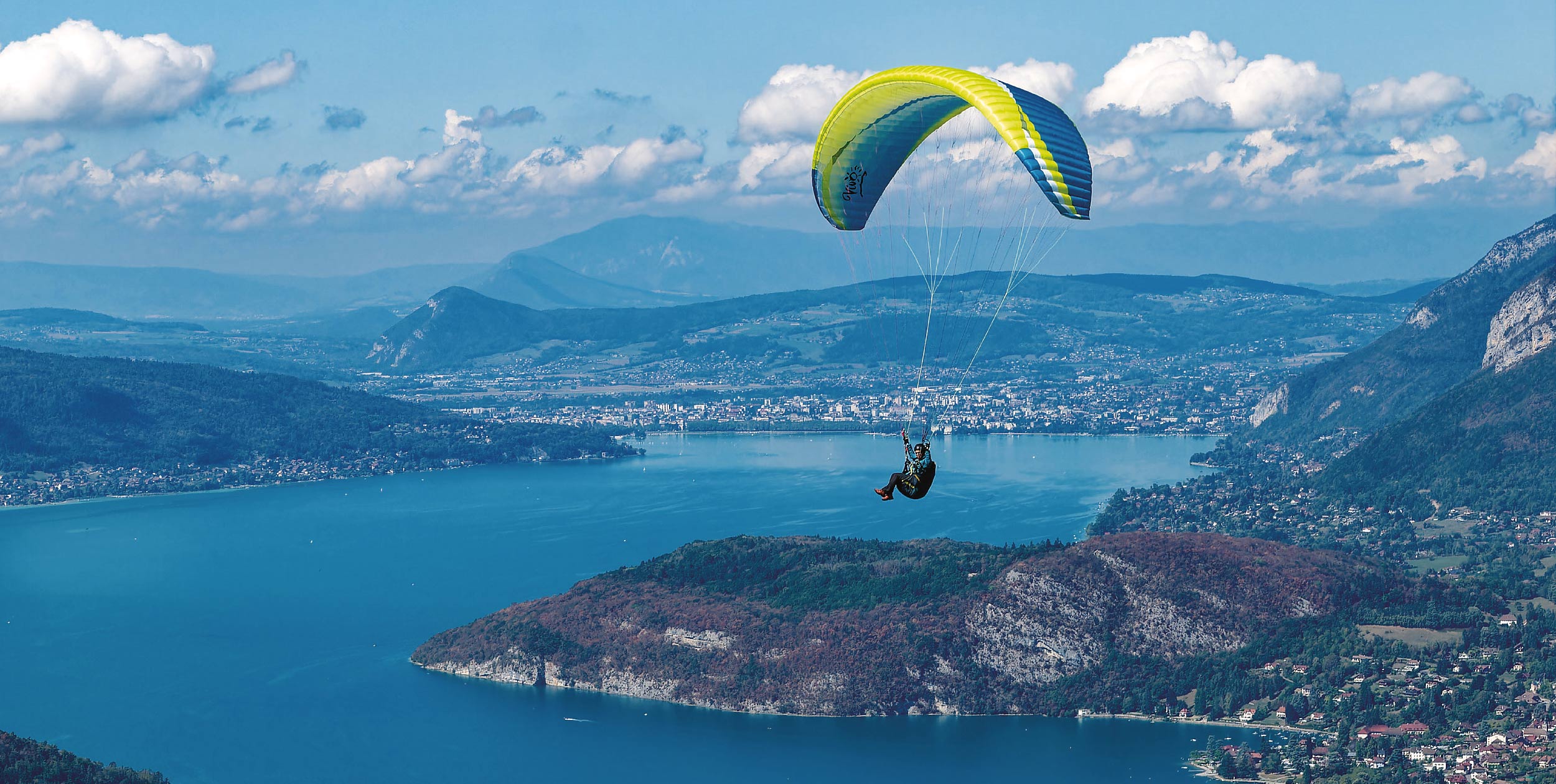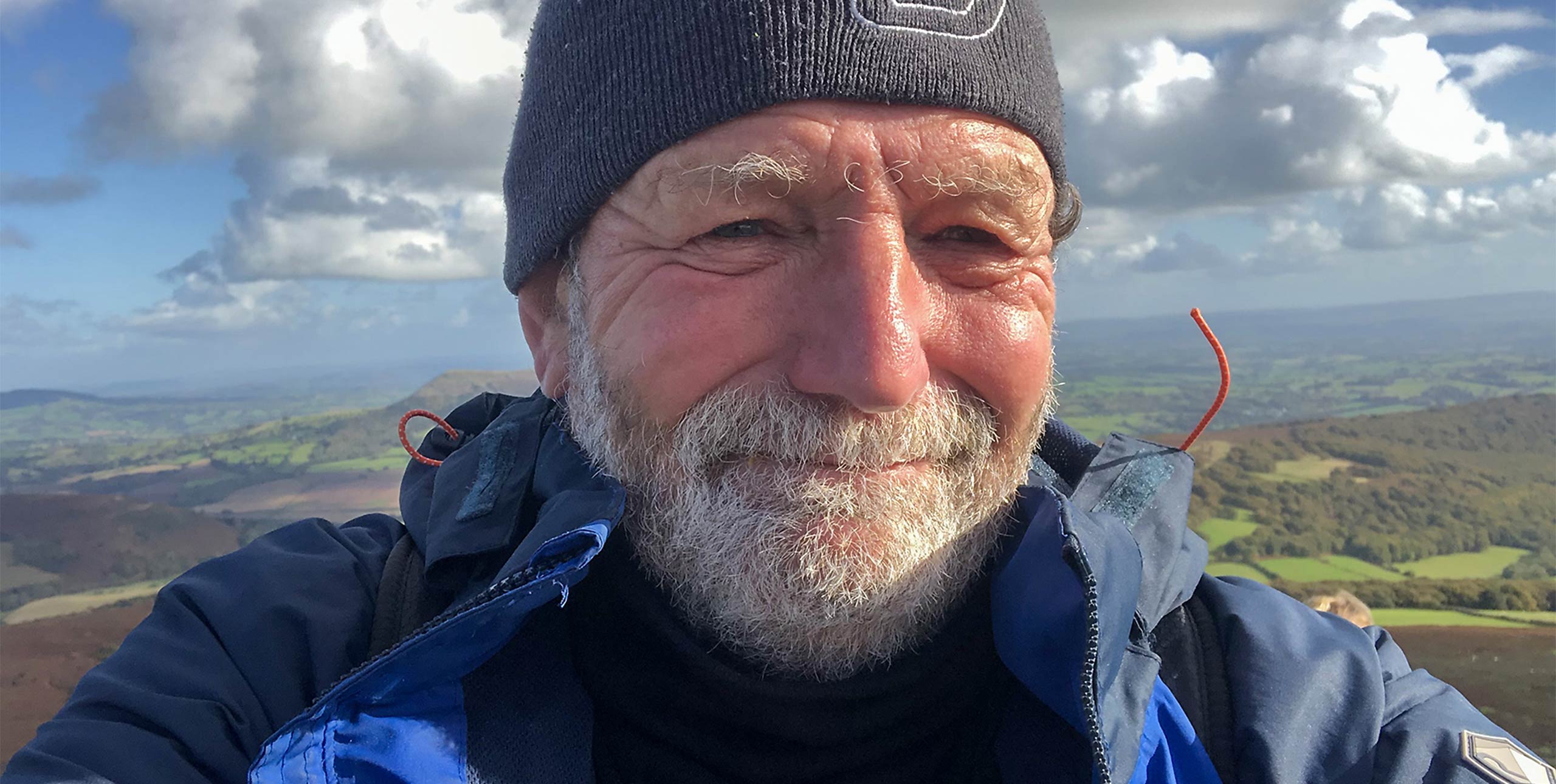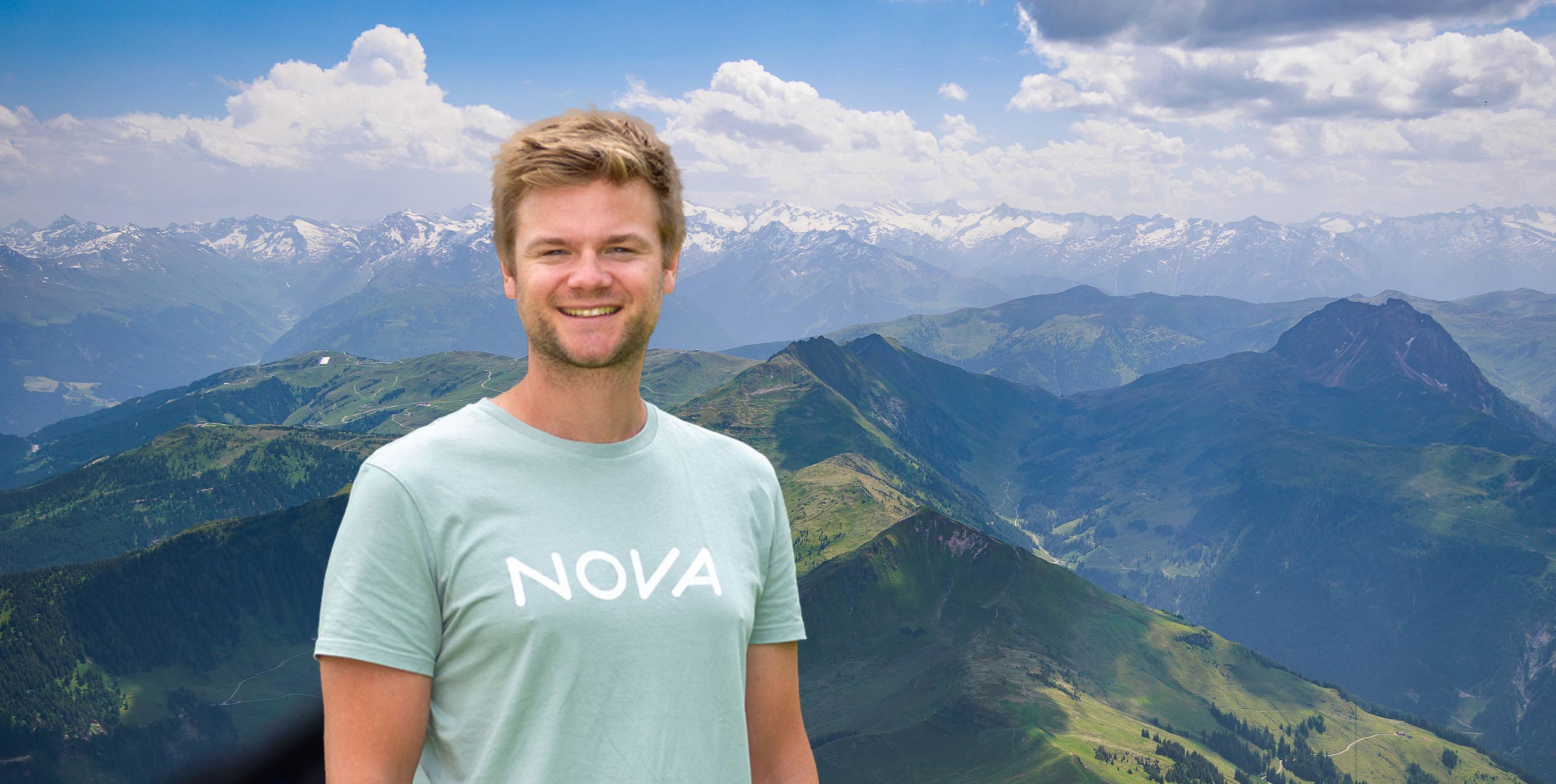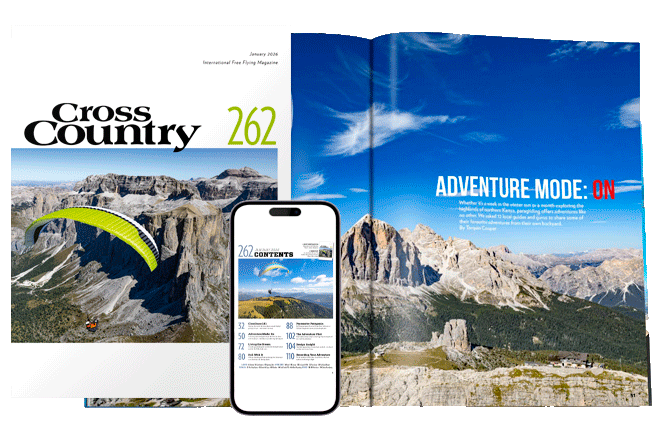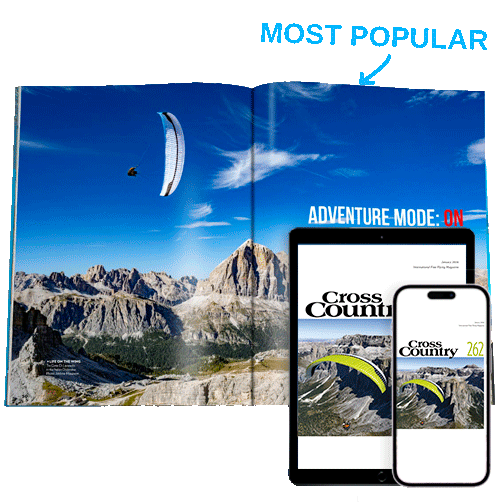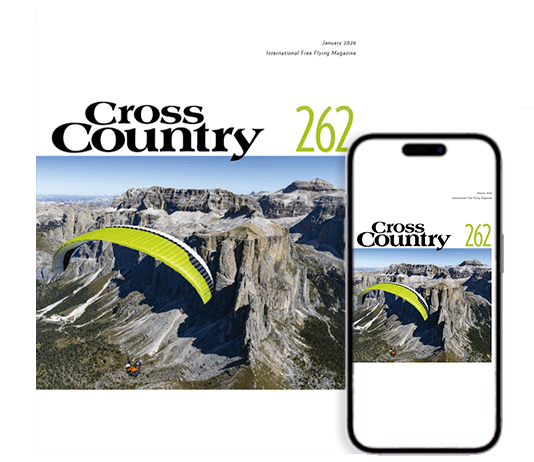
When Nova, seemingly out of the blue, announced the Phantom in July 2016, Facebook and the forums ignited. Using 99 cells and a similar aspect ratio to the low-EN B Ion 4, the company made bold claims promising the wing had Triton 2 matching performance with Ion 4 safety. Was it possible?
Hundreds of posts appeared on forums discussing whether this was marketing hype or if it was actually possible, with those of a scientific bent going into the maths of it all, leaving others more confused than ever.
The servers got even hotter when Nova said they were ready to take orders and announced the price, a whopping 6,500 euros. Questions abounded. Was it worth the cash? Who could afford it?
We took the chance to visit Nova and the team to ask them about the wing and fly it for ourselves.
So what’s this all about then? What inspired the Phantom project?
Designer Philipp Medicus: The vague concept had existed here at Nova for more than five years and I am sure other designers have had similar ideas. The basic question that led to the project was: “What would an intermediate wing look like if manufacturing wasn’t an issue.”
So how does adding all those extra cells work to produce more performance?
PM: The high cell count adds a lot of dimensional stability. This means the wing keeps its intended shape more than it would with a lower cell count. This increases performance. Ballooning of the upper and lower surfaces between the cell walls causes distortion of the aerofoil. At the profile ribs it is zero but in the middle of the cells it is at its maximum. This means the actual aerofoil is constantly changing across the span. But as designers our intention is to have just the one designed aerofoil in any given section of the span – minimising the ballooning with more cells gets us closer to that goal.
What would you say to those who argue that it’s still a low-aspect wing and in real life, turbulent air, it won’t cut through the air and provide the kind of glide a higher aspect wing like the Triton 2 will?
PM: Because of the higher dimensional stability of the wing it is less affected by the air changing its shape, and this is what gives it the better performance compared with low cell-count higher-aspect ratio wings. We have tested the Phantom extensively in real air side-by-side with the Triton 2 and felt no disadvantage in turbulent air.
Mario Eder (test pilot): In fact I would say as the air gets more turbulent the Phantom gets better. Where the Triton 2 starts to roll the Phantom surfs the turbulence like a high performance wing.
PM: Ferdinand Vogel’s recent competition results [he finished second in the serial class and 15th overall at the Austrian league] confirm our impressions.
What was the most challenging part of the project?
PM: Getting started in the first place was probably hardest. Actually building the first prototype was very challenging, but once we had that we were sure the project would be a success sooner or later.
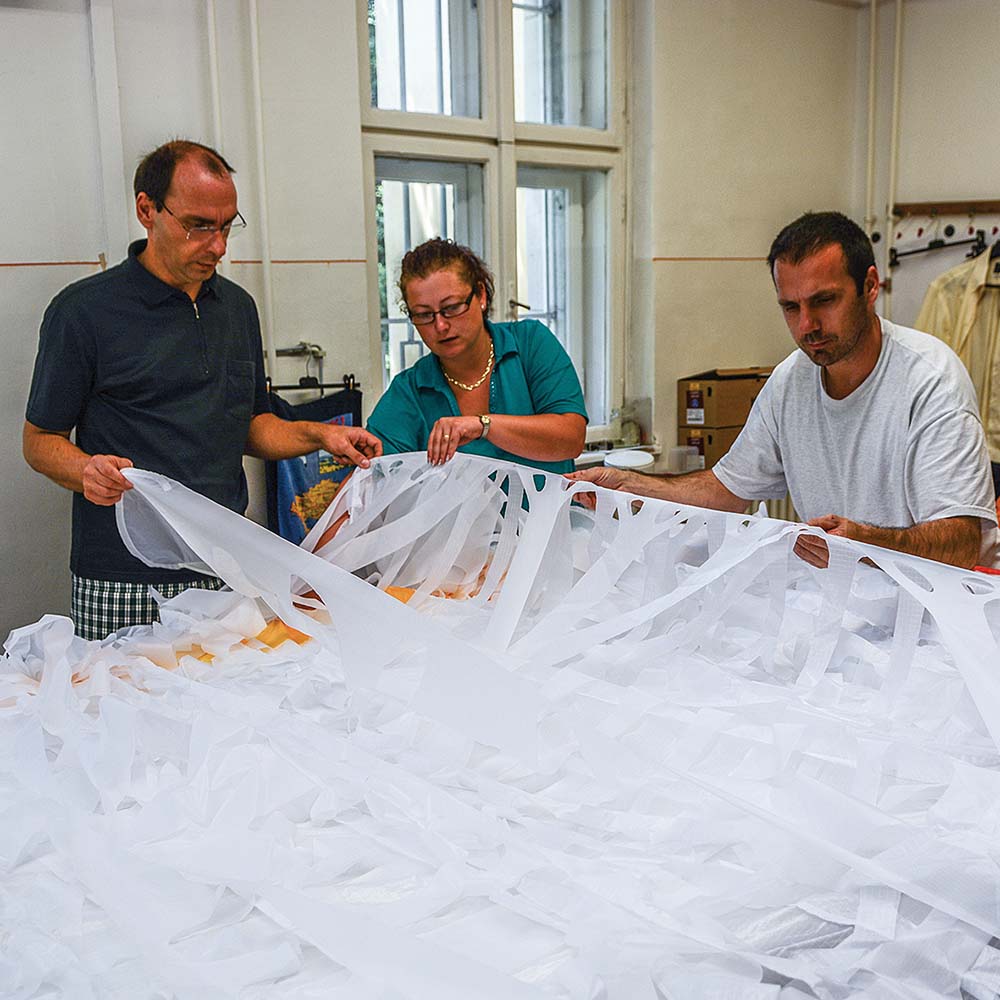
The internal structure of the wing looks incredibly complicated. We heard you spent quite a bit of time setting up the production workflow for this wing. What were the challenges you faced?
PM: This was probably the biggest challenge of the project. In the Phantom we have around 800 diagonal rib elements compared with around 80 in the Ion 4 and a few more in the Mentor 4. That means there are a lot more possibilities for making mistakes when putting the wing together and to compound this it makes spotting any mistakes more difficult. It’s quite easy to twist round one of these diagonal strips when attaching them. So the challenge was to think of new workflows to keep errors to a minimum.
ME: One example is the holes cut into the diagonal strips near where they attach to the wing surface. They aren’t really that important for air flow or keeping weight down but they are cut differently so the sewer can see which way round the piece should be at a glance. The laser cutter also numbers the pieces as part of the process, with pinholes.
PM: We also introduced new quality checks to make sure any errors are picked up. With a normal wing we inflate the finished glider with a fan for final inspection, but with the extra complexity of the Phantom we have introduced an extra check before the top surface is sewn on.
There are other issues as well – sewing the canopy takes about three times longer than sewing an Ion 4., but making the risers and lines takes about the same time. The well-established ratio between the size of the line department and the canopy-sewing department doesn’t make sense any more, so we have to adjust capacity and staff.
A funny example of how even small things have to be thought about: we recently realised the cell width is too small to fit our standard porosity meter for the check-ups, so we will have to design an adapter to be able to measure the cloth porosity for when Phantoms come in for checking.
It’s pretty expensive. Do you think there is a market for this type of wing? How many pilots do you think can afford a wing like this?
ME: In other sports we see markets for high-end products that aren’t just for pros. In mountain biking you can buy a bike for €10,000 if you want the best equipment money can buy. Paragliding has matured and we can’t see why it should be different from other sports.
PM: The cost of the wing is often just a fraction of the total cost pilots spend on paragliding if you consider the cost of travelling to different sites, holidays, technology etc.
Wolfi Lechner (managing director): Since we announced that we were accepting orders we have had well over a hundred orders, so it seems there is a clear market for the wing. In fact our challenge is now not selling it but making sure we can meet the demand.
Won’t the Ion 4 and even the Mentor 4 seem like ‘compromised wings’ now this has been released?
PM: I don’t really think so. Does the €2,000 bike seem like a ‘compromised bike’ when you can buy one for €5,000? Of course there will be a few Ion or Mentor pilots that will buy a Phantom instead.
Do you think other companies will follow your lead?
PM: Actually I am pretty sure they will.
So will this be the start of a ‘Nova Plus’ range?
PM: For now, no. We want to have a look at the Phantom’s success before deciding about further similar wings.
****

Hands on with the wing
I headed to Achensee with Nova test pilot Mario Eder, who took the very first medium Phantom off the shelf for me to fly.
This is by no means a full review, as we normally test wings over a period of time so we can try them in various conditions; it is a first impression from a single flight in good strong, thermic conditions. Just before flying the Phantom I took the Ion 4 out for a quick thermal to give me a direct comparison.
Nova have worked hard to keep the Phantom’s weight down. By using lightweight cloth, the medium Phantom weighs in at just 5.25kg, which is not that much more than the same size Ion, at 4.95kg. The lower lines are sheathed making handling easy, and the rest of the riser setup is standard well-finished Nova. The Speedbrake risers that Hugh Miller tested with the Ion 4 are a recommended option for the Phantom.
Flying the wing
On launch the Phantom is as easy as any other wing in the low-B class. It comes up smoothly and easily, inflating quickly despite all the internal construction. I used a reverse launch in light wind. The wing was easy to control and didn’t want to overshoot, as you would expect from a low-B.
Right from my first turns, I noticed the sharp handling of the wing. As soon as you put pressure on the brakes, the wing reacts precisely to your inputs. It has that real flickability of higher performance wings – just roll the wrist to turn sharper. I could put the wing precisely where I wanted all the time.
Its shape has a little less arc than the Ion, and the Phantom seems better controlled in roll. It feels like it is moving much more as a single unit, biting efficiently into the thermals. I discussed this with Philipp after flying as I thought it made the Phantom a bit more demanding than the Ion 4, rewarding precise handling. He argued that when we drive we use small hand movements, so most people are capable of precise movements, and he feels it is the damping of the wing that makes it so easy to fly as it doesn’t constantly need correcting.
There is no doubt though that the sharp handling will reward your skills, allowing you to get the most out of climbs.
In the strongest climbs (4m/s) I felt the Ion 4 sometimes got knocked back and I had to raise my hands to keep it sat above me, but the Phantom stayed above my head all the time, biting into the surges and efficiently converting energy into lift; it’s that intoxicating feeling you get when thermalling a higher class wing.
Performance
I know what you really want to know is, how is the performance? Does it really stand up to the claims Nova have made? The truth is, I can’t tell you. It will take more than one flight and I was unable to do any direct comparisons with other wings. I am sure that as soon as production Phantoms are out in the skies, we will get plenty of performance feedback. What I can say is the wing feels fast and efficient on glide.
Like the Ion 4 the bar is fully useable and I measured an increase in speed of 11-12km/h, with a similar bar pressure. When I was on the Ion 4, following Mario on the Phantom out on an initial glide, he seemed to float through the bumps whereas the Ion 4 felt like it was being blocked more by them and losing energy.
After a short glide the Phantom was ahead of and higher than me, but this is far from a scientific comparison so we will have to wait to see if the performance claims are true. Those that remember the Mentor / Omega claims will know that Nova have a good track record. Certainly the wing has great climbing performance and I was able to climb on the Phantom as well as anyone on the day.

Collapses
So what about passive safety? Out over the lake at Achensee I took the opportunity to try a few collapses. I did the same tests on both the Ion 4 and the Phantom, and both wings reacted very similarly to fairly big induced collapses.
I felt the Phantom had a little more energy as it came out, which it converted smoothly to height. Both wings re-inflate smoothly with very little turn or dive. Holding down the risers to hold the collapse in, it is easy to counter the wing’s turn with weightshift and a little brake.
Spirals and wingovers show that the Phantom holds energy well, but the precise handling means you can manage it easily. This precise handling doesn’t seem to come at the cost of an early stall point – the brakes still have huge range, similar to the Ion 4. Coming in to land I was able to use a deep flare to pop it down exactly where I wanted.
In conclusion
Nova have created an exciting wing! While its performance may be the headline claim, the handling and the way it drives through bumps is something special. I can see this wing will be particularly appealing for those weekend warriors that used to fly hotships but now want that bit more passive safety for their long cross-country days out.
The Phantom will give them the safety they want but allow them to still enjoy the sensations of a high-performance wing. It’s certainly smile-inducing, but is it worth the money and will it sell? Well, the current waiting lists indicate there is certainly a market. I for one would love to take this machine out on a big cross-country to get a real feel for the performance, as I love its handling and feel.
****
Manufacturer’s Spec
What Nova say: “A new era in paragliding. The safety of a basic intermediate with the performance of a top-end wing”
Use: Cross-country flying
Pilot level: Intermediate
Sizes: XS, S, M, L
Flat area (m2): 20.25, 22.25, 24.25, 26.24
Take-off weight (kg): 60-90, 80-100, 90-110, 100-130
Cells: 99
Flat aspect ratio: 5.19
Weight (kg): 4.8 – 5.5
Certification: EN B
nova.eu
Marcus King flew the Nova Phantom M at an all-up weight of 103kg with an Advance Impress 3. First published in Cross Country 174, September 2016. To stay up to date and read our reviews first, subscribe to Cross Country




